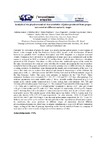Por favor, use este identificador para citar o enlazar este ítem:
http://www.alice.cnptia.embrapa.br/alice/handle/doc/1060068Registro completo de metadatos
| Campo DC | Valor | Lengua/Idioma |
|---|---|---|
| dc.contributor.author | SANTOS, S. | pt_BR |
| dc.contributor.author | SILVA, G. | pt_BR |
| dc.contributor.author | PRUDÊNCIO, M. | pt_BR |
| dc.contributor.author | FAGUNDES, J. | pt_BR |
| dc.contributor.author | NASCIMENTO, A. | pt_BR |
| dc.contributor.author | LINHARES, M. | pt_BR |
| dc.contributor.author | OLIVEIRA, A. | pt_BR |
| dc.contributor.author | LIMA, M. | pt_BR |
| dc.contributor.author | PEREIRA, G. E. | pt_BR |
| dc.date.accessioned | 2017-01-05T11:11:11Z | pt_BR |
| dc.date.available | 2017-01-05T11:11:11Z | pt_BR |
| dc.date.created | 2017-01-05 | pt_BR |
| dc.date.issued | 2016 | pt_BR |
| dc.identifier.citation | IN: INTERNATIONAL SYMPOSIUM ON TROPICAL WINES, 5., 2016, Petrolina, PE. Book of abstracts...Petrolina, PE: Embrapa Semiárido, p. 61, 19 a 21 outubro, 2016. | pt_BR |
| dc.identifier.uri | http://www.alice.cnptia.embrapa.br/alice/handle/doc/1060068 | pt_BR |
| dc.description | Currently the cultivation of grapes for grape juice production has gained ground in new regions of Brazil, as the example in the São Francisco Valley (SFV) located in the Northeastern of Brazil between the parallels 8:09° Southern Hemisphere and 40W longitude in a tropical semi-arid climate. Companies have invested in the production of grape juice on a commercial scale in this region is estimated in 2015 a volume of 1.5 million liters of whole juice. However, viticulture practiced in VSF (Tropical Viticulture) is different from other traditional regions of the world, for the same vine produces two crops per year, with this, the wineries are planning the time when they intended to harvest the grapes and perform production pruning vines at different times, by adopting a scaling system to be distributed crops throughout the month, and several months of the year. The aim of this study was to evaluate how physical and chemical characteristics of the elaborate hp grape juices with. cv. Isabel precocious and BRS Violeta, harvested at different maturity stages in the São Francisco Valley. | pt_BR |
| dc.language.iso | eng | eng |
| dc.rights | openAccess | eng |
| dc.subject | Estádio de maturação | pt_BR |
| dc.subject | Vale do São Francisco | pt_BR |
| dc.subject | Suco de uva | pt_BR |
| dc.title | Analysis of the physicochemical characteristics of juices produced from grapes harvested at different maturity stages. | pt_BR |
| dc.type | Resumo em anais e proceedings | pt_BR |
| dc.date.updated | 2019-03-08T11:11:11Z | pt_BR |
| dc.subject.thesagro | Uva | pt_BR |
| riaa.ainfo.id | 1060068 | pt_BR |
| riaa.ainfo.lastupdate | 2019-03-08 -03:00:00 | pt_BR |
| dc.contributor.institution | Sabrina Santos, Mestranda of Bahia State University, Juazeiro, Bahia, Brazil; Gildeilza Silva, Mestranda of Bahia State University, Juazeiro, Bahia, Brazil; Maria Prudêncio, Mestranda of Bahia State University, Juazeiro, Bahia, Brazil; Joyce Fagundes, Mestranda of Bahia State University, Juazeiro, Bahia, Brazil; Antônio Nascimento, Mestranda of Bahia State University, Juazeiro, Bahia, Brazil; Maria Linhares, Graduate Studant, IF Sertão, Petrolina, PE, Brasil; Ayrlan Oliveira, Graduate Studant, IF Sertão, Petrolina, PE, Brasil; Marcos Lima, Professor, Federal Institute of Pernambucano Hinterland, Petrolina, PE, Brazil; GIULIANO ELIAS PEREIRA, CNPUV. | pt_BR |
| Aparece en las colecciones: | Resumo em anais de congresso (CNPUV)  | |
Ficheros en este ítem:
| Fichero | Descripción | Tamaño | Formato | |
|---|---|---|---|---|
| Giulianop61BookofAbstractsISTW2016.pdf | 133,17 kB | Adobe PDF |  Visualizar/Abrir |









